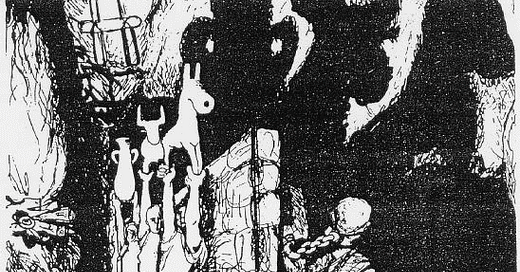The prisoners stared intently at the dark, two-dimensional forms playing out a drama for them to observe.
Here, chained to a wall since birth and unable to go and explore the world, these prisoners observed the dance of shadows on the wall, created by the flicker of a flame burning behind them. The fire was designed to keep them warm, but it also provided just enough light for these shadows to perform little stories.
This shadow world was the only reality these prisoners had ever known, and they naturally came to believe that the way they perceived the world was complete and correct. Generation after generation added to the idea that the shadow world was all there was—reality.
One day, a prisoner escaped from his chains and stumbled outside. Gradually, his eyes adjusted and he was able to see the shadow world for what it was. He understood that the real world was out there, outside of the cave, and that shadows were just a clumsy approximation for reality.
When he returned to the cav…
Keep reading with a 7-day free trial
Subscribe to Goatfury Writes to keep reading this post and get 7 days of free access to the full post archives.



